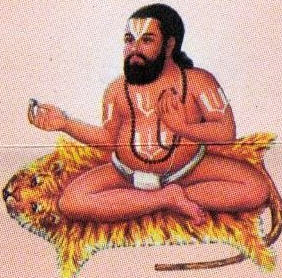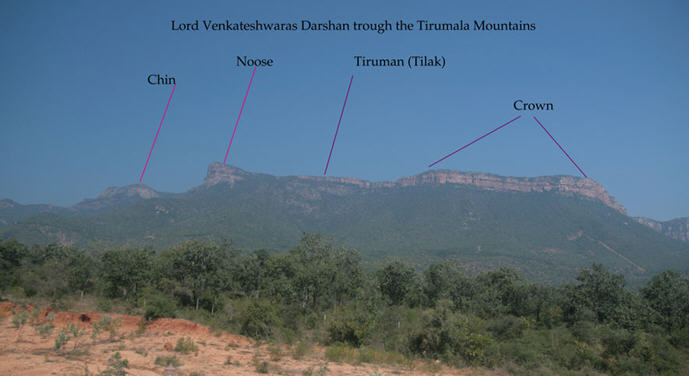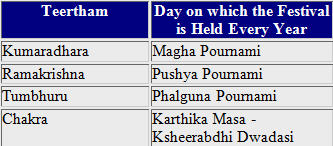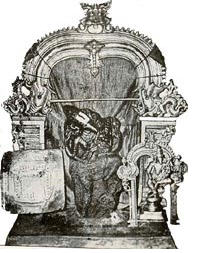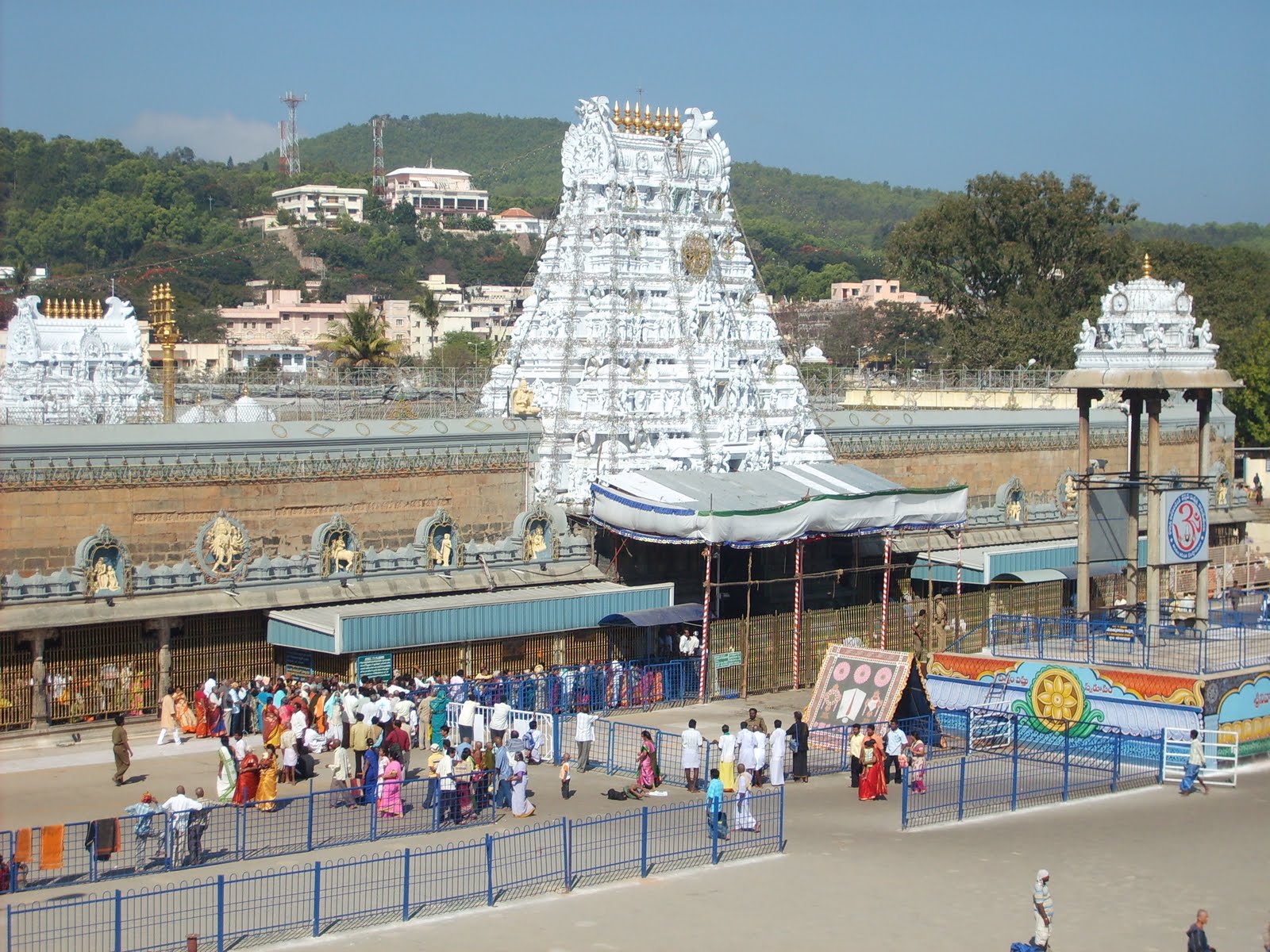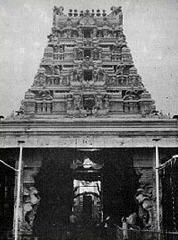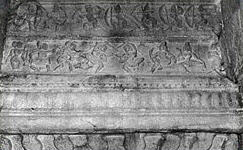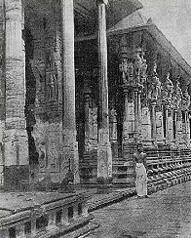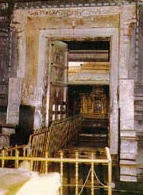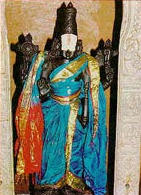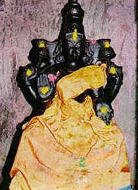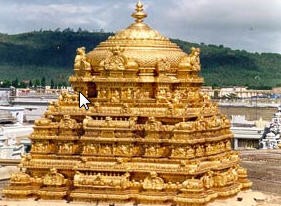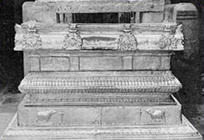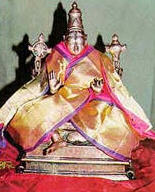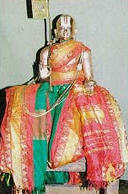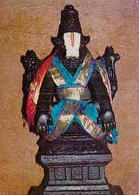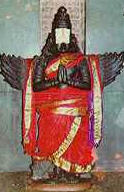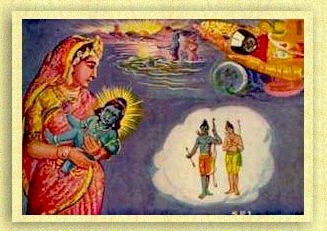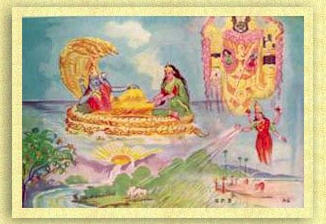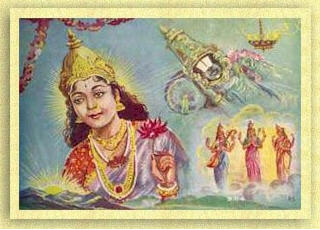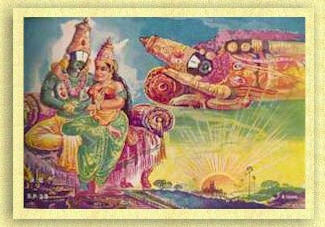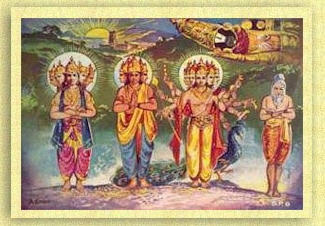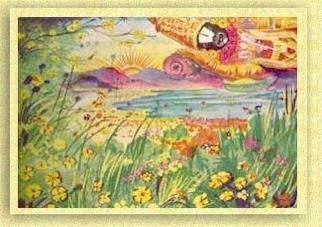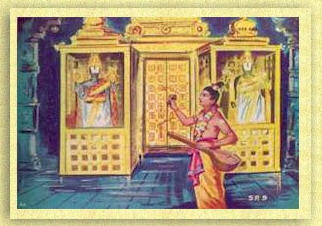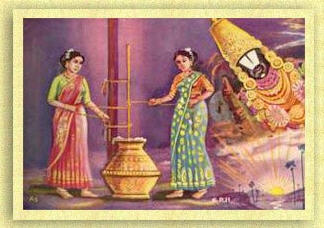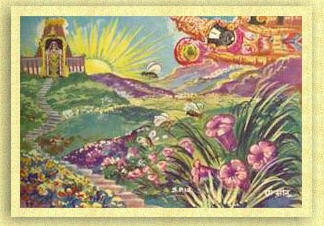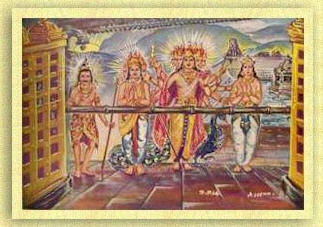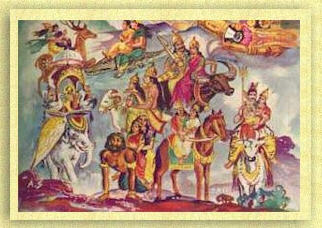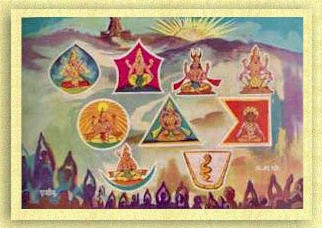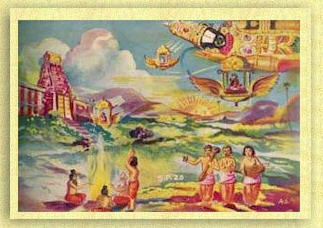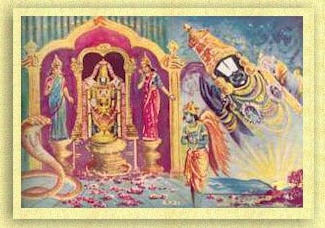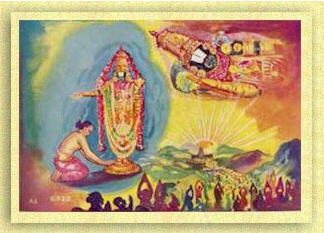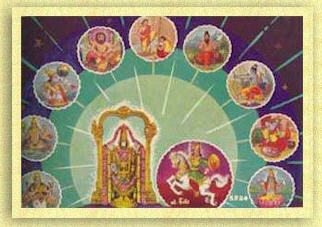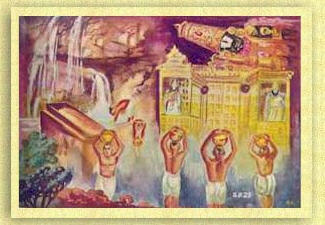a) Sri Padmavathi Ammavari Temple, Tiruchanoor
Tiruchanoor, the abode of Goddess Sri Padmavathi Devi, is one of the highly venerated places in the South, located five kms. from Tirupati, the temple dedicated to Sri Padmavathi Devi, the consort of Lord Venkateswara, attracts thousands of devout pilgrims every day. The Goddess, also known as Alamelu Manga, is the inexhaustible source of compassion and love. According to tradition, the Mother Goddess manifested Herself in the holy Pushkarini called Padmasarovaram in a golden lotus. The Venkatachala Mahatyam states that Lord Suryanarayana was instrumental in blossoming of the lotus in full splendour. A temple dedicated to Lord Suryanarayana is situated on the eastern side of the Pushkarini. The Padma Purana gives a vivid description of the advent of the Goddess and subsequent wedding with Lord Srinivasa.The manifestation of Sri Padmavathi Devi occurred in the month of Karthika on Sukla Paksha Panchami when the star Uttarashada in the ascendent. The Brahmotsavam of the Goddess is celebrated with all pomp and glory to commemorate the auspicious occasion of Her avatara. This resplendent festival celebrated for ten days attracts devout pilgrims from far and wide. The Panchami tirtham marks the highlight of Tiruchanoor Brahmotsavam. Turmeric, Tulasi, Silk Saree and other sacred presents are brought from Tirumala temple in an impressive procession on this occasion and offered to the Goddess. In an exquisitely decorated mandapam built on the banks of Padma Sarovaram, sacred bath is offered to Goddess Padmavathi Devi and Sri Sudarsana Chakra amidst vedic chants. The ten-day Brahmotsavam at Tiruchanoor is a spectacular event witnessed by her myriads of devotees. It is also an occasion for all devotees to receive Her benign grace in abundance. Temple programme and sevas sub-temples in its premises are :
1. Sri Krishnaswamy Temple
2. Sri Sundara Rajaswamivari Temple
3. Sri Suryanarayana Swamivari
Temple Important Festivals 1.Sri Padmavathi Ammavari Temple:
• Navarathri Festival(Dasara)
• Kartheeka Brahmotsavam
• Float festaival
• Vasanthotsavam
• Rathasapthami II.
Sri Sundara Rajaswamivari temple:
• Avatharotsavam for 3 days.
b) Sri Govindarajaswami Temple, Tirupati
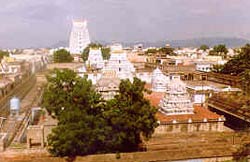
Sri Govindarajaswami Temple is one of the most important temples in Tirupati. It has an imposing gopuram which can be seen from a distance. Saint Ramanujacharya consecrated the temple in 1130 AD. The festivals and functions are similar to those conducted in the Sri Venkateswara temple. The annual Brahmotsavam at this temple is celebrated in the month of Vaisakha every year. The annual float festival is also celebrated every year.
The sub-temples in its premises are:
• Sri Parthasarathiswami Temple
• Sri Kalyana Venkateswaraswami Temple
• Sri Andal Temple
• Sri Salai Nachiyar Ammavari Temple
• Sri Ramanuja Temple
• Sri Vyasaraya Anjaneyaswami Temple (Near Dwajasthambham)
• Sri Tirumangai Alwar Temple.
• Sri Kurath Alwar Temple
• Sri Madhurakavi Alwar Temple
• Sri Chakrathalwar Temple.
• Sri Mudal Alwar Temple.
• Sri Manavala Mahamuni Temple.
• Sri Vedantha Desikar Temple.
• Sri Woolu Alwar Temple.
• Sri Anjaneyaswami Temple (Near outer Bugga).
• Sri Nammalwar Temple.
• Sri Sanjeevarayaswami Temple (opposite the Hathiramjee Mutt)
• Sri Eduru Anjaneyaswamy Temple. The important festivals conducted in Sri Govindarajaswami Temple are:
• Vaisakha Festival (Brahmotsavam)
• Float Festival
• Rathasapthami
• Bugga and Ponnakalva Utsavam
• Sri Andal Margalineerattam Festival
• Sri Salai Nachiyar Panguni Uttara Festival
• Sri Bhashyakarla Utsavam
• Sri Nammalwar Utsavam
• Jestabhishekam
• Thiruvadipuram Festival
• Thirumala Nambi Festival
• Adhyayanotsavam
• Thiru Nakshatram of alwar
• Manavalamahamuni Asthanam
• Vedantha Desikar Utsavam
c) Sri Kodandaramaswami Temple, Tirupati
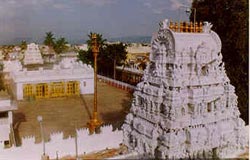
This temple, which was built by a Chola king during the tenth century AD, is situated in the heart of the Tirupati town. The presiding deities are Sita, Rama and Lakshmana. The temple of Anjaneyaswami, which is directly opposite, is a subshrine of this temple. According to legend, this temple commemorates the visit of Sri Rama to Tirupati. The festivals of Ugadi and Sri Ramanavami are celebrated in this temple on a grand scale. Brahmotsavam is celebrated at this temple every year.
d) Sri Kapileswaraswami Temple, Tirupati
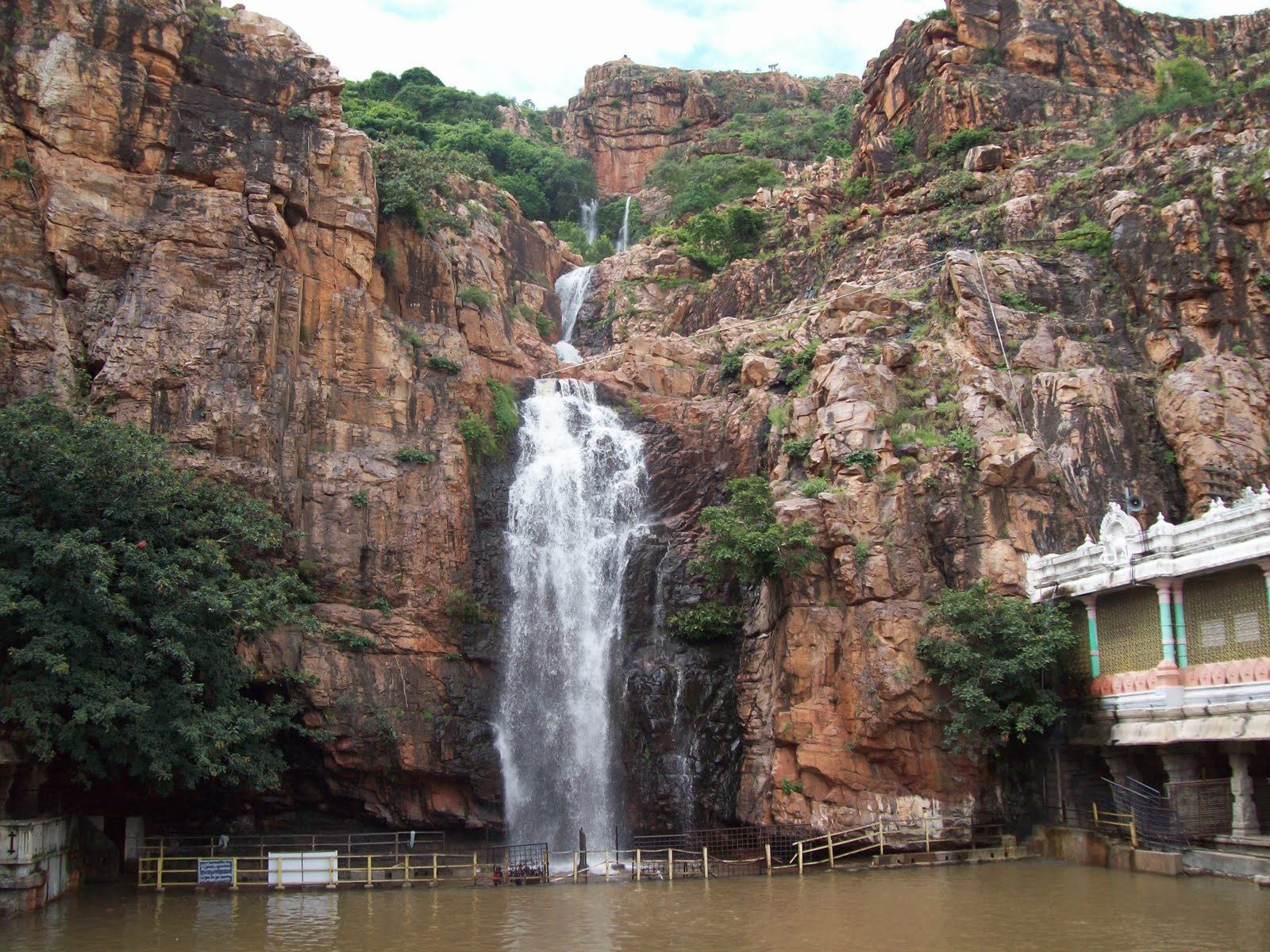
Sri Kapileswaraswami Temple is the only temple dedicated to Lord Siva in Tirupati. It is situated about 3 km to the north of Tirupati, at the foot of the Tirumala Hills. The sacred waterfall called Kapila Teertham (also known as Alwar Teertham) is located here. Annual Brahmotsavams and festivals like Vinayaka Chaturthi, Mahasivaratri, Skanda Shasti and Annabhishekam are performed here with great pomp and splendour. Sri Venugopalaswamy Temple, Sri LakshmiNarayanaswamy Temple and Sri Vinayakaswamy Temple on the Second Ghat Road are sub-temples which function under the control of the Kapileswaraswamy Temple.
e) Sri Kalyana Venkateswaraswami Temple, Srinivasa Mangapuram
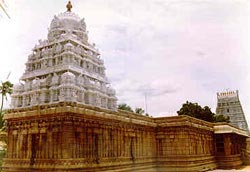
Sri Kalyana Venkateswaraswami temple is at Srinivasa Mangapuram situated 12 km to the west of Tirupati. According to legend, Lord Venkateswara stayed here after his marriage with Sri Padmavathi Devi, before proceeding to Tirumala. Annual Brahmotsavam and Sakshatkara Vaibhavam are celebrated in grand manner.
F) Sri Kalyana Venkateswaraswami Temple, Narayanavanam
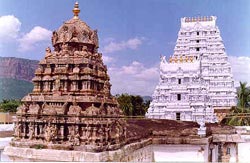
Sri Kalyana Venkateswaraswami temple at Narayanavanam is 40 km from Tirupati. Lord Sri Venkateswaraswami and Sri Padmavathi Ammavaru, daughter of Akasa Maharaja were married here. Sri Kalyana Venkateswaraswami is the main deity here.
There are four sub-temples:
• Sri Padmavathi Ammavari temple
• Sri Andal Ammavari temple
• Sri Sita Lakshmana Sameta Ramulavari temple
• Sri Ranganayakula Swami temple. In addition, there are five other temples attached to Sri Kalyana Venkateswaraswami temple.
• Sri Parasareswara Swami temple
• Sri Veerabhadra Swami temple
• Sri Sakti Vinayaka Swami temple
• Sri Agastheeswara Swami temple
• Sri Avanakshamma temple: The annual Brahmotsavams are conducted every year at the main temple, Sri Veerabhadraswami temple and Sri Avanakshamma temple. Navarathri festival is also celebrated at the Sri Avanakshamma temple every year. Giri Pradakshina (Konda Chuttu Thirunallu) is one of the important festivals conducted during the end of Sankranthi, once a year, with the utsava murthis of Sri Parasareswaraswami and Sri Champakavalli Ammavaru, and Sri Agastheeswaraswami and Sri Markathavalli Ammavaru.
The other festivals conducted here are:
• Andal Neeratotsavam
• Panguni Uttarotsavam
• Varalakshmi Vratham
• Float festival
• Anivara Asthanam
• Ratha Sapthami
• Ugadi Asthanam
• Sreerama Navami
• Chaitra Pournami
• Andal Thiruvadipuram Utsavam
• Deepavali Asthanam
• Vaikunta Ekadasi & Dwadasi
• Karthika Deepam
• Dhanurmasam
f) Sri Veda Narayanaswami Temple, Nagalapuram
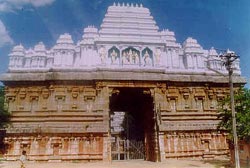
Sri Veda Narayanaswami Temple is located in Nagalapuram, 70 km south-east of Tirupati. It is believed that Lord Sri Maha Vishnu, in the form of Matsya, killed the rakshasa (demon) Somakudu here, and retrieved the Vedas from the latter. The sanctum sanctorium houses an image of the Matsya form of Vishnu, with Sridevi and Bhudevi on either side. A peculiar feature of the deity is that it holds the Sudarsana Chakra in prayoga (ready for release). The temple was constructed by Sri Krishnadeva Raya, the Vijayanagara emperor, and is a fine specimen of the Vijayanagara style of architecture.
The sub-temples within the main temple are:
• Sri Vedavalli Tayaru
• Sri Lakshmi Narasimha Swami temple
• Sri Veeranjaneya Swami temple
• Sri Bhakta Anjaneya Swami temple
• Sri Sita Lakshmana Sameta Ramulavari temple The most important annual festivals in this temple are Brahmotsavam, and Surya Puja along with the float festival, conducted on the 12th, 13th and 14th days of the month of Phalguna. During these three days, the sun’s rays fall on the main deity between 1800 hrs and 1815 hrs. On the first day, they fall on the feet, on the second – on the chest and on the third – on the forehead, depicting worship by Sri Surya Bhagavan (the Sun God) himself. The annual Brahmotsavam is conducted in the month of Jyeshtha.
The other important sevas conducted in the temple are:
• Float Festival during Surya Pooja
• Vaikunta Ekadasi
• Andal Neeratotsavam
• Bhogi
• Sankranti and Kanumu
• Rathasapthami
• Kanchi Garuda Seva
g) Shri Venugopalaswami Temple, Karvetinagaram

Sri Venugopalaswami temple is situated in Karvetinagaram (near Puttur), 48 km from Tirupati. The main deity of the temple is Sri Venugopalaswami with His consorts – Sri Rukmini Ammavaru and Sri Satyabhama Ammavaru. The temple timings are 0600 to 1100 hrs and 1600 to 2000 hrs every day. There is a sub-temple with the deity Sri Sita Ramula Pattabhishekam.
The important festivals conducted in the temple every year are:
• Annual Brahmotsavam
• Utlotsavam
• Vaikuntha Ekadasi (Mukkoti Ekadasi)
• Ugadi Asthanam
• Gokulashtami
• Teppotsavam (Float Festival)
• Sankranti Utsavam
h) Sri Prasanna Venkateswaraswami Temple, Appalayanagunta
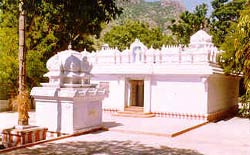
Sri Prasanna Venkateswaraswami temple is located in Appalayanagunta, 14 km from Tirupati. It is believed that after Lord Sri Venkateswara married Sri Padmavathi Ammavaru, He blessed Sri Siddeswara and other sages here. The temple, constructed by the Rajas of Karvetinagar, consists of a shrine for Anjaneyaswami. The imposing image of the wind-god is worshipped by devotees for relief from chronic diseases.There are also deities of Goddess Padmavathi and Sri Andal here.
The presiding deity in this temple, unlike in the main temple, is in the Abhaya Hastha pose. Brahmotsavam is celebrated once a year at this temple. Fairs & Festivals
• Anivara Asthanam
• Deepavali
• Vaikunta Ekadasi and Vaikunta Dwadasi
• Rathasapthami
• Ugadi i) Sri Chennakesavaswami Temple, Tallapaka Sri Chennakesavaswami temple is located in Tallapaka village at a distance of 100 km from Tiurpati which is the birth place of Sri Annamacharya, the Sankeertana Acharyulu who was born to Sri Narayanasuri and Lakkamamba. According to legend, the temple was constructed and administered by the Matti Rajas about 1000 years ago.
The sub-temples of Sri Chennakesavaswami temple are:
• Sri Kamakshi Sameta Sri Siddeswaraswami temple
• Sri Gopalaswami Sameta Chakrathalwar temple Brahmotsavam is conducted every year during Sri Chennakesavaswami and Sri Kamakshi Sameta Sri Siddeswaraswami. Annamacharya Jayanthi and Vardhanti Utsavams are conducted every year.
j) Sri Kariya Manikyaswami temple,
Nagiri Sri Kariya Manikyaswami temple (also called Sri Perumala Swami temple) is located in Nagiri, 51 km from Tirupati. It is believed that Lord Sri Maha Vishnu killed Makara (a crocodile) and saved Gajendra (an elephant) at this place. This episode is referred to as the Gajendramoksham in the Mahabhagavatam.
The important festivals celebrated in this temple are:
• Kanchi Garuda Seva
• Kanuma Utsavam
• Rathasaptami
• Vaikuntha Ekadasi ((Mukkoti Ekadashi) Sri Annapurna Sameta Kasi Visweswaraswami Temple, Bugga Sri Annapurna Sameta Kasi Visweswaraswami Temple is located in Bugga, 56 km from Tirupati. It is on the outskirts of Nagiri, about 5 km on the Nagalapuram route.
The temple is on the banks of Kusasthali river. The main deities of this temple are:
• Sri Kasi Visweswara Swami
• Sri Annapurna Ammavaru
• Sri Kamakshi Ammavaru
• Sri Devi Bhudevi Sameta Sri Prayaga Madhava Swami
The important annual festivals celebrated at the temple are:
• Maha Sivaratri
• Kartika Somavaramu
• Pradoshakala Puja (performed every Thrayodashi which occurs twice a month)
• Kala Bhairava Astami (monthly)
